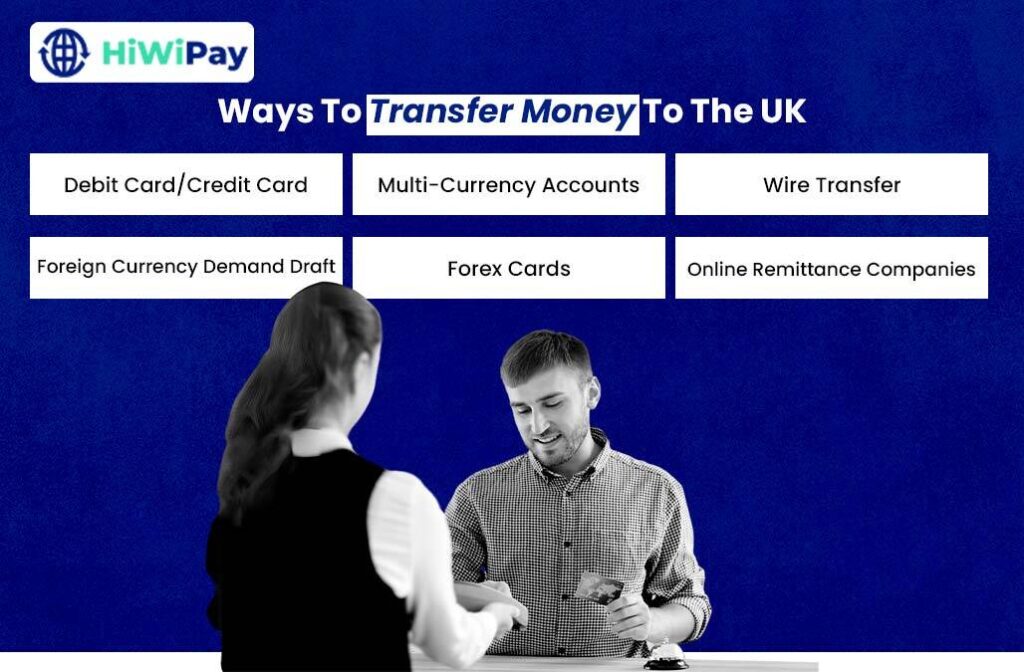Reasons Why People Send Money from India to the UK
If your child is living in the UK as an international student, they will have a lot of expenses like tuition, accommodation, food, travel, etc., and you might feel compelled to send money so that they can live without any worries.
Before you send money to your child, you must learn about the actual cost of living in the UK as an international student. Note that there are several things, such as the chosen city and lifestyle, that influence the actual cost of living in the UK. So, the specific number might be different; however, here is a brief overview of the cost of living as an international student in the UK:
| Major Expenses | Cost |
| Tuition fees | INR 5,00,000 – INR 68,00,000 per year |
| Accommodation | INR 6,09,816 – INR 8,53,752 per year |
| Food & Groceries | INR 16,879 – INR 21,098 per month |
| Travel | INR 3,375 – INR 6,000 per month |
| Healthcare & Insurance | INR 81,863 per year |
| Entertainment & Miscellaneous | INR 20,000 – 40,000 per month |
Note: The figures mentioned in the table are approximate. They may vary by location and currency exchange rate. Last updated on 19/05/24.
What Are The Ways To Transfer Money from India To UK

To transfer money from India to the UK, you have multiple options at your disposal. However, before exploring your options, you must know the RBI’s strict regulations regarding the maximum amount of money you can transfer abroad in a financial year. As per the LRS regulations, you can only transfer up to USD 250,000 (INR 20,682,750) per financial year (April-March).
You are also bound to pay tax on this but only if the remittance amount is above INR 700,000. Luckily, the TCS rates for outward remittance and money sent for educational and medical purposes are not the same. For any outward remittance, the applicable TCS rate is 20%. However, for an outward remittance for educational purposes, TCS is 0.5% (with a loan) and 5% (without a loan). For medical purposes, it is 5%.
Now, here are the ways in which you can transfer money from India to the UK:
1. Debit Card or Credit Card
Most banks in India let you make international payments using your debit or credit cards. They make this possible by partnering up with companies like Visa, Mastercard, Amex, etc. However, this is not a pre-activated feature. You need to activate it, be it in person or online, to make international transfers.
For this kind of transfer, you need the recipient’s details, including their name, account number, address, country, bank name, the bank’s address, the SWIFT code, and transit number.
The minimum and maximum amounts you can send vary by bank. For example, ICICI Bank allows daily transfers up to INR 20 lakhs, while HDFC Bank has a daily limit of INR 7,44,462. The transfer time also varies between 2 to 5 days, depending on the bank.
To make the transfer, you must pay certain fees as well, which vary from bank to bank. For example, ICICI Bank charges:
- Markup fee: 3.5% + Goods and Services Tax (GST)
- Overseas ATM cash withdrawal fee: Rs. 125 + GST
- Overseas balance enquiry: Rs. 25 + GST
2. Multi-Currency Accounts
A multi-currency account is basically an account that allows you to send, hold, and receive money in various currencies all in one place. It is a cheap and convenient way to transfer money abroad. These accounts don’t usually charge a fee; however, you will have to consider costs related to exchange rates and transaction fees when transferring money. This makes it essential for you to keep a close eye on the exchange rates as they tend to fluctuate. This will allow you to convert and transfer money when the rates are low and in your favour.
3. Wire Transfer
Wire transfers are a type of electronic funds transfer (EFT) that go through banks. If you have a savings account, you can send money from India using a SWIFT transfer.
To do this, you will need the recipient’s bank account number, bank name, SWIFT code, bank address, and transit code. This method allows you to transfer money safely within 1-3 working days, though the exact time can vary depending on the bank and transfer details.
The fees for wire transfers from India to the UK differ by bank. For example, ICICI Bank charges INR 750 for resident customers and INR 500 for NRI customers.
Read More : Wire Transfers vs Forex Cards: A Comparative Guide
4. Foreign Currency Demand Draft
If you don’t trust online platforms for sending money from India to the UK, you can use a foreign currency bank draft instead. Here’s how it works:
- Go to the bank and fill out a form.
- Submit the form to the bank for processing.
- You might also need to provide a signed indemnity letter or deposit slip.
Different banks have different minimum amounts for these drafts. The money typically takes 1 to 21 international working days to be credited. The bank will charge a fee of INR 500 plus applicable tax.
Read More : How to Transfer Money From India to Canada
5. Forex Cards
Many banks, such as ICICI and HDFC, offer forex cards. You can load money onto this card for your child before they arrive in the UK. The biggest benefit is that there are no fees for transferring money. However, there are small fees for ATM withdrawals. Plus, a Forex card lets you lock in the exchange rate when you load it, which protects you from exchange rate changes. Therefore, it is important to pay attention to the exchange rate when adding money.
6. Online Remittance Companies
You can use several online remittance companies like HiWiPay to send money from India to the UK. They offer various payment methods such as bank transfers (ACH or SWIFT), debit or credit cards, bank drafts, and international money orders.
When choosing a company, look for transparency, competitive rates, and efficient processes. Check their certifications or licenses and read online reviews.
To transfer money, follow these steps:
- Enter the amount you want to send in foreign currency and fill out the student’s details with their KYC information.
- Fill in the beneficiary’s account information, address, KYC, and contact information.
- Digitally sign the A2 form and confirm the final amount in INR, including TCS, to generate the challan.
- Make the payment to the specified bank account either through your own bank or via net banking.
Transfers typically take 24 to 48 hours, which is faster than banks.
These companies usually have an online platform, either an app or a website, where you can set up transfers, track progress, and manage your account. The minimum transfer amount ranges from INR 100 to INR 1000.
Online remittance companies generally charge a 1% to 2% markup fee and transaction fees. They often have a calculator on their site or app to show the fee breakdown and the final amount the recipient will receive.
Read More : Education Loan Interest Rate for Abroad Study
Choose the Right Transfer Method to Money Transfer
To choose the right transfer method for you, you must consider their pros and cons to find the one best suited for your needs. Here are the pros and cons of the transfer money abroad methods:
1. Debit Card or Credit Card
Pros
- Real-time transaction
- Easy to use and widely accepted
- Reliable and secure
Cons
- High transaction fee for transfers abroad
- Long processing time of 2 to 5 days
2. Multi-Currency Accounts
Pros
- Can hold, send, and receive money in multiple currencies
- Competitive exchange rates
- Best for frequent international transfers
Cons
- High transfer fees
3. Wire Transfer
Pros
- Safe and secure
- Best for sending large sums of money
- Relatively faster than other money transfer options, taking only 1-3 days
Cons
- High transfer fees
- Not best suited for small transfers
4. Foreign Currency Demand Draft
Pros
- Safe option to transfer money as it was made while keeping the beneficiary in mind
- Much cheaper than other options
Cons
- Long processing time
- Inconvenient for urgent money needs
5. Forex Cards
Pros
- Convenient to carry
- Lock in the exchange rate at the time of loading money
- Minimum to no foreign transaction fees
Cons
- May have issuance or reloading fees
- ATM withdrawal charges
6.Online Remittance Companies
Pros
- Flexible and convenient online platforms
- Same day transfers
- No upper limit, apart from RBI’s limit
- Competitive transfer fees and markup fee
Cons
- At least 1% markup fees and transaction fees per transaction.
Read More : How to Get Student Loan for MBA Abroad
Understand the Regulations and Requirements
There are 3 main regulatory bodies in India that govern money transfers from India to the UK: the Foreign Exchange Management Act (FEMA), the Reserve Bank of India’s (RBI) Liberalised Remittance Scheme (LRS), and the Indian Income Tax Act.
As for the UK, the key regulatory bodies for international money transfers include the Financial Conduct Authority (FCA) and HM Revenue & Customs (HMRC).
Documents Required:
You will need the following documents to successfully transfer money from India to the UK:
- PAN Card Copy of the Remitter
- Duly Filled A2 Form cum Declaration
- KYC Documents like a passport or Aadhar Card
How to Open a Bank Account in the United Kingdom
Opening a bank account in the UK for an international student involves the following steps:
- Check Your Eligibility: Ensure you are eligible to open a UK bank account.
- Choose a Bank: Research and pick a bank that meets your needs.
- Gather Required Documents: You’ll usually need –
- A valid passport
- Your student visa
- Proof of your UK address, like a tenancy agreement or a letter from your university
- Make an Appointment: Schedule a meeting with your chosen bank.
- Attend the Appointment: Go to the bank in person for your meeting.
- Choose the Right Account: Talk to the bank representative to find the best account for you.
- Complete the Application: Fill out the bank’s application form.
- Verification: The bank will check your documents and identity.
Remember, steps might vary depending on the bank, so always check with your chosen bank for the most accurate information.
Why Choose HiwiPay?
HiWiPay is here to help you with a quick and easy way to pay college fees in UK from India. With transfers completed in 24-48 hours, low fees (1-2% markup), and clear pricing, we make sure everything is secure and flexible. Check out our website or download our app today!
Frequently Asked Questions for Transfer Money from India to UK
What is a SWIFT code?
A SWIFT code is a special code given to banks and other financial institutions around the world. This code, made up of 8 to 11 letters and numbers, helps identify these institutions during international transactions. The code shows the institution’s name, location, and branch.
How can I send money to the UK?
You can send money to the UK through debit card or credit card, multi-currency accounts, wire transfer, foreign currency demand draft, forex cards, and online remittance companies like HiWiPay.
Can I transfer money from an Indian account to a UK account?
Yes, you can transfer money from an Indian account to a UK account.
What is the maximum limit for money transfer from India to UK?
As per LRS, you can only transfer up to USD 250,000 (INR 20,682,750) per financial year (April-March).
Do I need pay tax if I transfer money from India to the UK?
Yes, you have to pay TCS and GST on transfers abroad.
What is the maximum money transfer without tax in India?
INR 7 Lakh is the maximum amount of money transferred without tax in India.
Can I send money from India to the UK using Google Pay?
No, you can only use Google Pay domestically.
Which App is best for International money transfer from India?
HiWiPay’s app is the best for international money transfer from India.
How much money can I repatriate from India to UK?
The amount of money you can send from India to the UK depends on the type of account you have:
1. NRE Account (Non-Resident External): No limit on the amount you can send.
2. NRO Account (Non-Resident Ordinary): You can send up to USD 1 million per financial year.
3. FCNR Account (Foreign Currency Non-Resident): No limit on the amount you can send.
References:
“About International Transactions – ICICI Bank.” Www.icicibank.com, www.icicibank.com/personal-banking/cards/credit-card/travel-easy/international-transactions. Accessed 21 May 2024.
Cost of Living & Studying in UK: Fees, Travel & Food. 10 Oct. 2023, leapscholar.com/blog/cost-of-studying-in-uk-for-indian-students/ Accessed 21 May 2024.
“Foreign Currency Cheque | ICICI Bank | NRI.” Www.icicibank.com, www.icicibank.com/nri-banking/money_transfer/foreign-currency-cheque. Accessed 21 May 2024.
“Multicurrency Account: What Is It and How Does It Work? – Forbes Advisor.” Www.forbes.com, www.forbes.com/advisor/banking/multi-currency-account/. Accessed 21 May 2024.
“Reserve Bank of India – Notifications.” Www.rbi.org.in, www.rbi.org.in/scripts/notificationuser.aspx?id=10192. Accessed 21 May 2024.
Saxena , Aman. “How to Transfer Money to a Foreign Bank Account from India.” Wise, 1 July 2022, wise.com/in/blog/transfer-money-to-foreign-bank-account-from-india. Accessed 21 May 2024.
Sehgal, Diganth Raj. “International Money Transfer Laws You Need to Know About.” IPleaders, 6 Oct. 2020, blog.ipleaders.in/international-money-transfer-laws-you-need-to-know-about/#International_payments. Accessed 21 May 2024.
taxguru_in, and CA Mamta Chopra. “New 20% TCS on Foreign Remittance from 01.10.2023 Simplified.” TaxGuru, 30 Sept. 2023, taxguru.in/income-tax/new-20-percent-tcs-foreign-remittance-oct-2023-simplified.html Accessed 21 May 2024.
“Wire Transfer.” Www.icicibank.com, www.icicibank.com/personal-banking/online-services/funds-transfer/outward-remittance/branch-transfer/wire-transfer. Accessed 21 May 2024.









